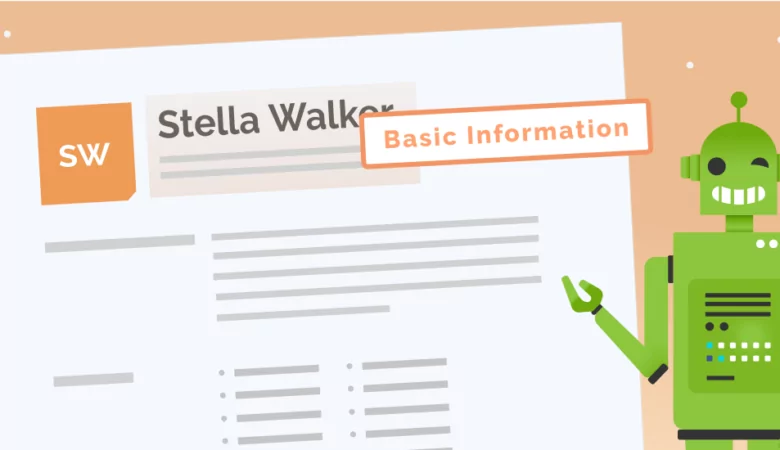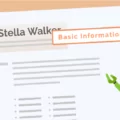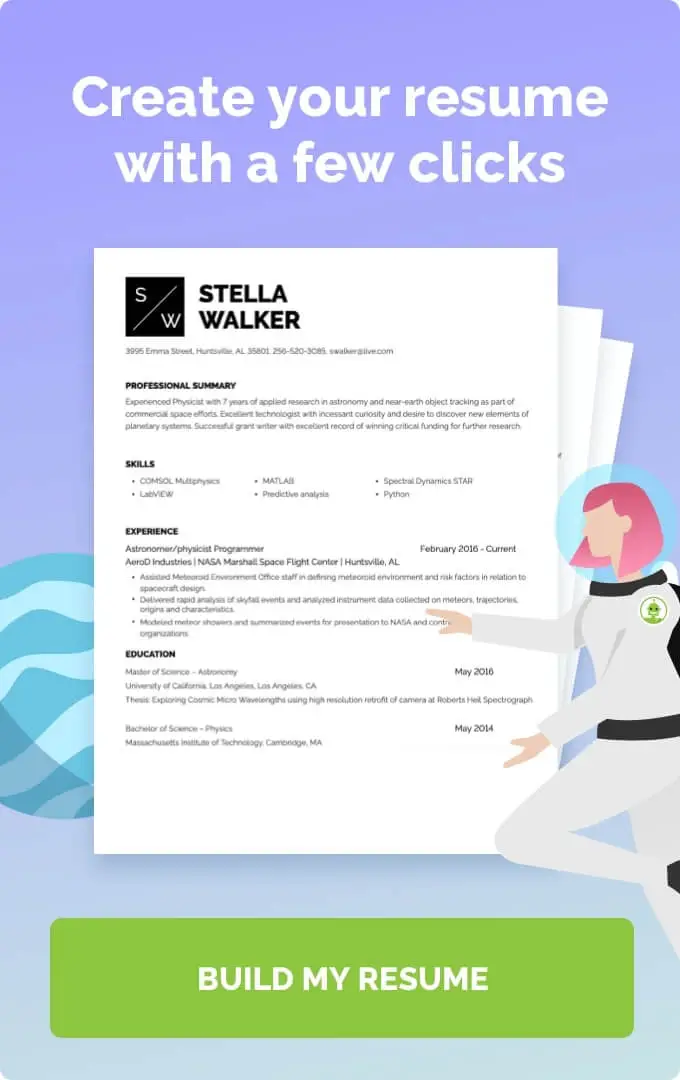Being a carpenter is a job where experience and skill are valued. Let’s see how you can use our resume examples to create a resume that can showcase just that.

Carpenter Resume Examples to Use This Year
What To Highlight in a Carpenter Resume
If you’re looking to be a carpenter, you’ll need a resume that accurately reflects your skills and experience. Whether you’re a rough carpenter or a finish carpenter, there are a few basic requirements recruiters are looking for. Although you do not need a college education to work in carpentry, you need an internship or courses from a vocational school. Highlighting your background is important for this kind of job. You’ll be working with many hand and power tools, so the recruiter needs to see that you know how to handle yourself on a construction site. Even if you don’t have years of experience, focusing on your background with renovation or woodworking projects can turn a bland resume into a spectacular one.

Structure of a Carpenter Resume
Before you think about the content of your resume, you need to understand the structure. Don’t confuse resume structure with resume format. The structure contains specific elements while the format rearranges those elements to fit a specific purpose. There are three resume formats to choose from, a chronological resume format, which focuses on your work history, best used for candidates with a lot of consecutive experiences, a functional resume format, which focuses on transferable skills and is best used for entry-level positions with no more than three years of experience or applicants with career gaps, and a combination resume format, which focuses on both skills and experience.
A professional resume has a specific structure that you need to follow. Here are the elements you should include regardless of the resume format you use:
-
Header
Your resume should contain a section solely for your contact information. The header should be placed at the very top of the page so hiring managers can easily get your information if they want to contact you. You can also include any professional links in this area such as your LinkedIn or portfolio.
-
Resume summary or objective
A resume summary is a short, two to three-sentence paragraph where you introduce yourself and summarize the best parts of your work experience, skills and achievements. This goes right under the contact information. Because this is the first section hiring managers will read on your resume, make yourself look very impressive by writing about the best parts of your resume.
-
Skills
In the skills section you need to list the abilities that make you qualified for the job. These can be hard skills or soft skills. Hard skills are those that can be measured such as knowledge of software and machinery. Soft skills are more about personal attributes like punctuality and innovation. Here are some common skills involved with carpentry work that you can include in your resume:
- Blueprint interpretation
- Problem-solving skills
- Dexterity
- Project management skills
- Knowledge of building codes and building plans
- Knowledge of safety regulations, including OSHA
- Ability to work with tools, such as circular saws and power saws
- Team player
- Communication skills
- Drywall application
-
Work experience
In the work experience section, you’ll want to list your relevant experience relating to carpentry or construction. Commercial construction, home renovation and other kinds of construction work apply. Remember to only include relevant work experience. If you have very little work experience in construction, you can include other jobs if there is too much blank space on the resume.
-
Education
In the education section, you’ll want to include your academic achievements. Include any diplomas you have and give the recruiter some insight into your academic background. All you need is a high school diploma to work in carpentry but if you did go to college and studied a subject that gives you an edge in carpentry, include it. This can be architecture or math degrees. If you were a carpenter apprentice of any kind, showcase it, firsthand experience is the most valuable element a carpenter can list in their resume.
Do’s and Don'ts for a Carpenter Resume
Keep these tips in mind when writing your carpenter resume:
Do:
- Use bullet points to list skills. Bullet points can help make the resume look clean and professional. It helps the hiring manager process the information faster.
- Use resume templates and resume builders. Resume templates are guides to help you understand what a resume is supposed to look like. Resume builders are interactive tools used to create a resume with your information. Check out free resume templates on ResumeNerd and use our resume builder to create the perfect resume.
- Proofread your resume before sending it. Grammar mistakes and spelling errors make you look unprofessional and very distracting. You want the recruiter to focus on your qualifications, not the mistakes.
Don’t:
- Include irrelevant skills. The skill set you list should relate to carpentry. For example, even if you have experience with Microsoft Excel, this isn’t relevant to carpentry unless you’re applying for a higher position, like a lead carpenter. If you’re applying as a journeyman, only include skills journeymen use daily.
- Copy resume samples. When looking up carpenter resume samples, don’t copy the actual text. It makes the resume feel basic and inauthentic. The sample might also include skills you don’t have, such as framework building or working with saws and you don’t want to include anything you can’t do in your resume.
- Overwrite. The resume should list your experiences and achievements, not explain them in detail. If you do want to elaborate on something, do so in a single sentence.
FAQ: Carpenter Resumes
Yes. You should include a cover letter with your resume. In the cover letter, you can go into detail about your experience and skills and talk about any completed projects that helped you learn those skills, which is a useful accompaniment to your resume if it’s in the functional format.
If you have little professional experience in carpentry, create a resume using the functional format. Focus on your skills and instead of writing a resume summary, write a resume objective. It will state your goals for the job, highlight your best skills and mention any construction projects you’ve done in the past, even if it’s as simple as fixing door frames.
The best way to change your resume to fit different job applications is to read the job description. The job description can tell you a lot about the construction company and what they’re looking for in an employee. Identify different keywords and use them throughout your resume to create the right tone. Keywords give insight into the specific qualities the employer is looking for in a candidate or the specific duties they are supposed to take on.







